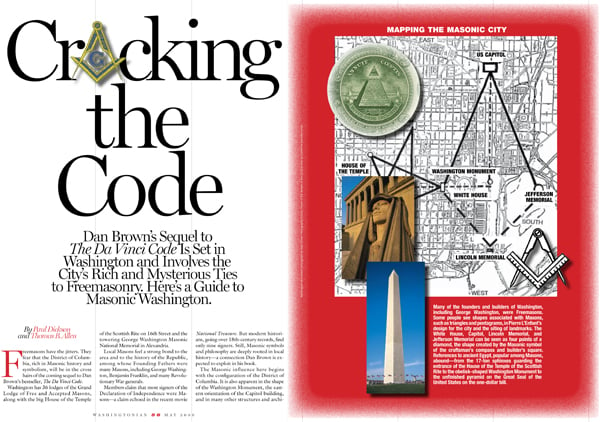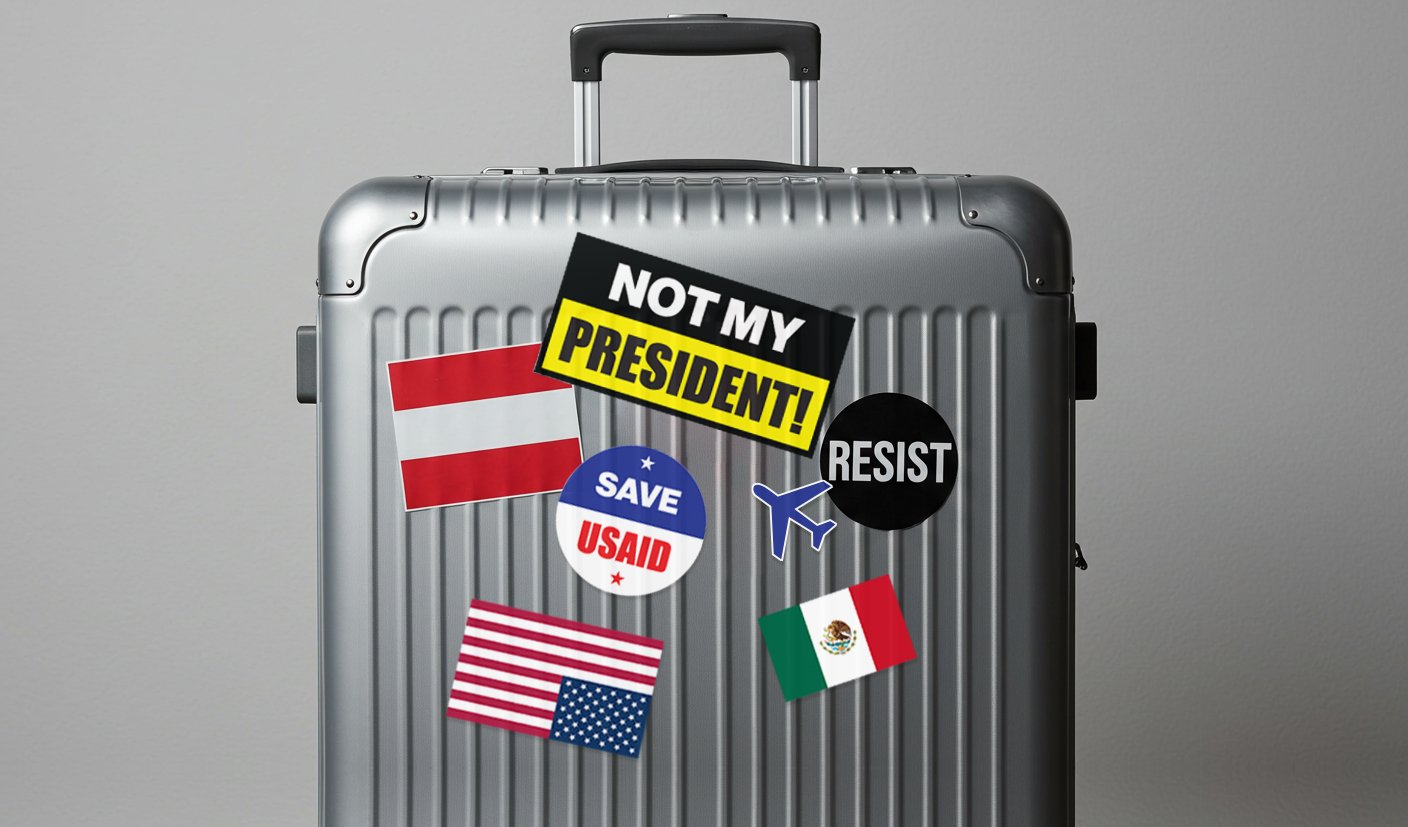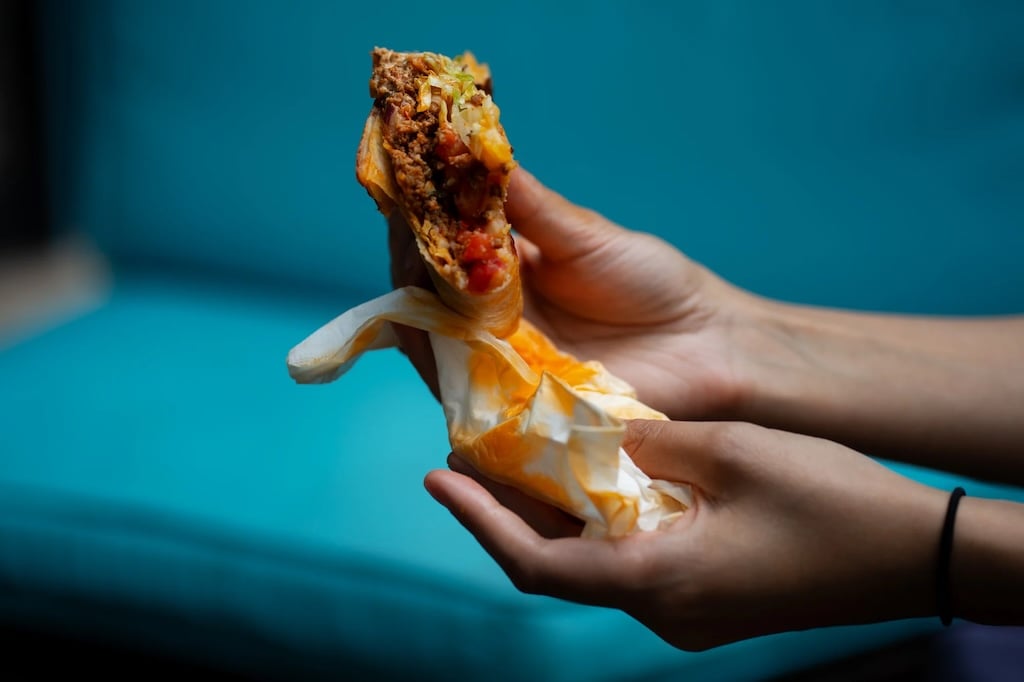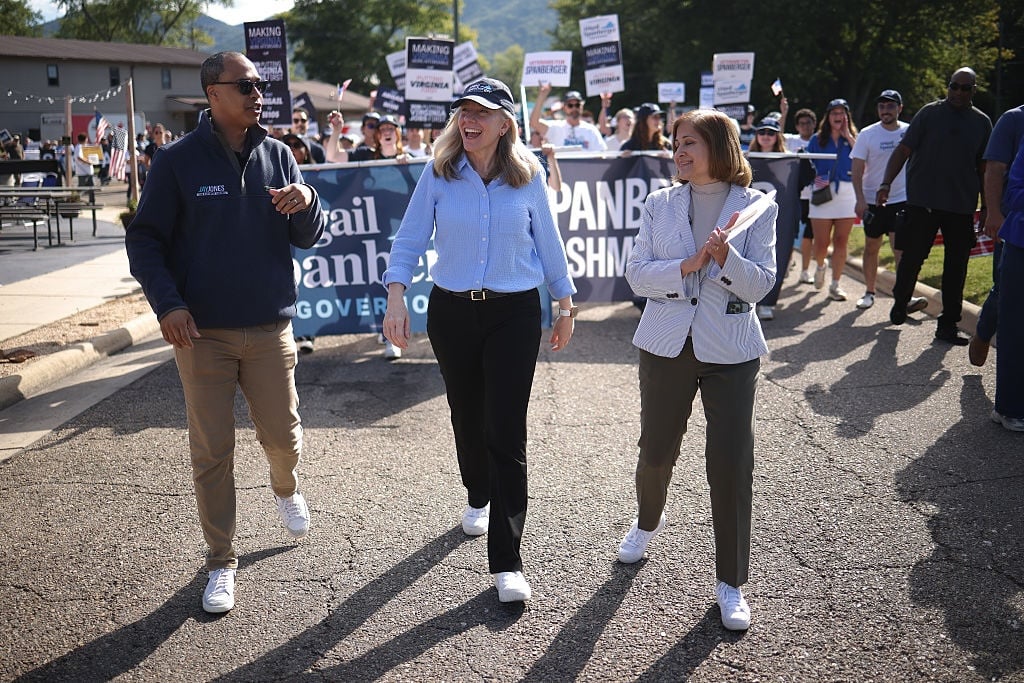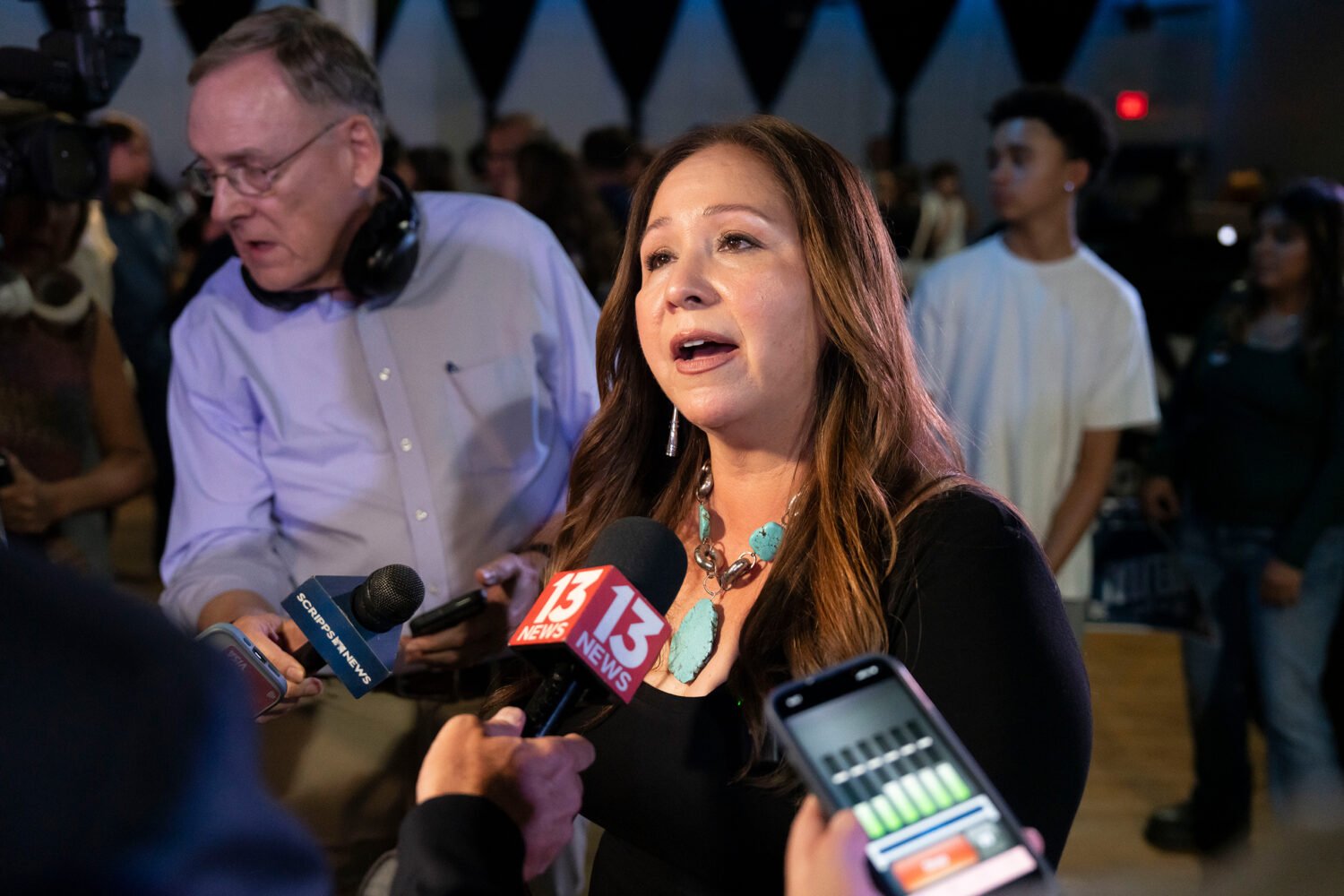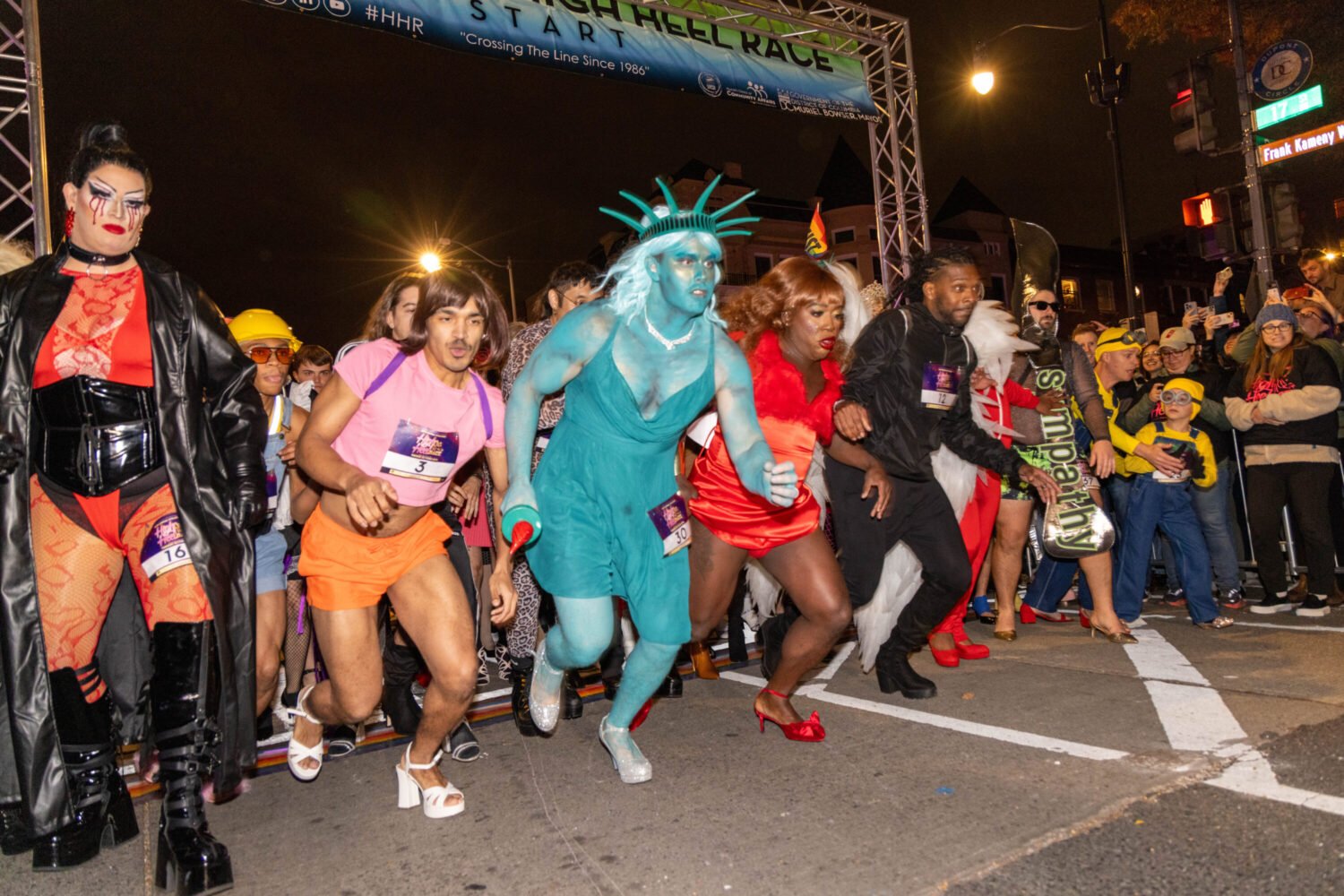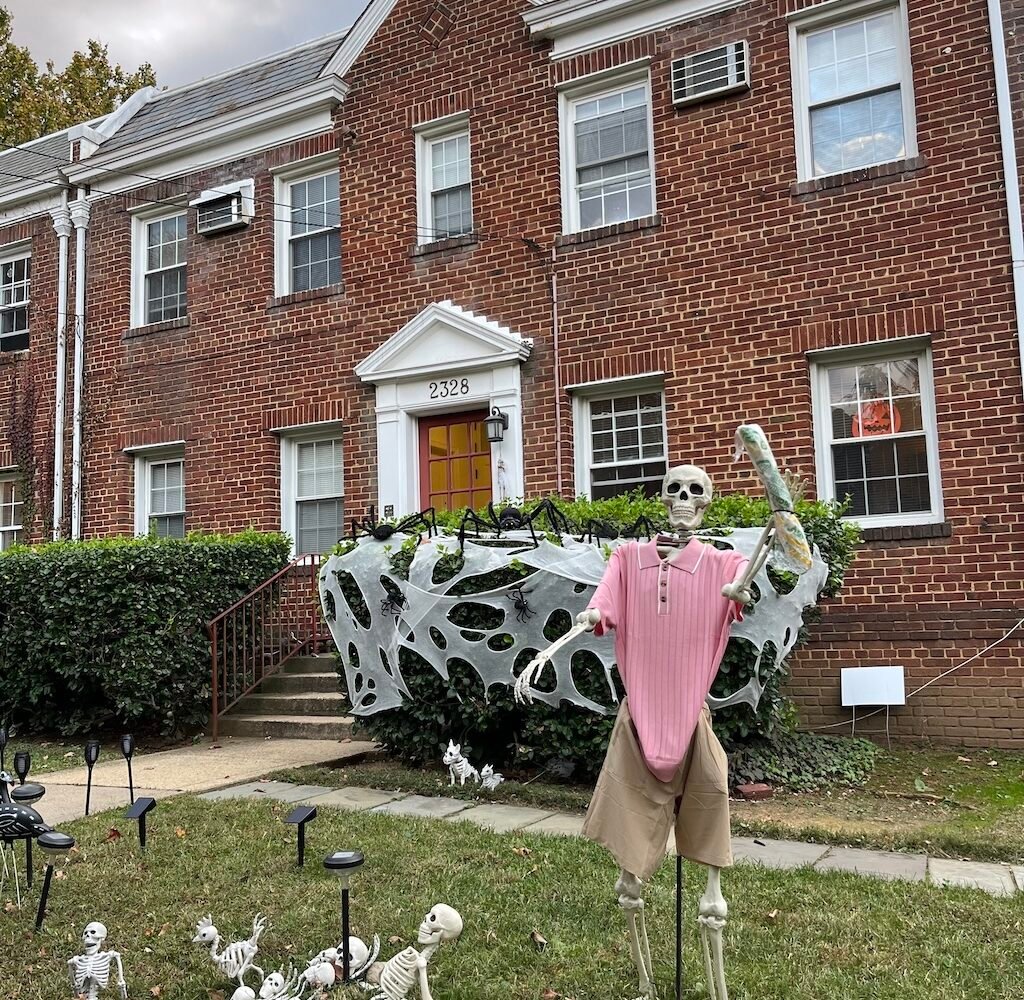Freemasons have the jitters. They fear that the District of Columbia, rich in Masonic history and symbolism, will be in the cross hairs of the coming sequel to Dan Brown’s bestseller, The Da Vinci Code.
Washington has 36 lodges of the Grand Lodge of Free and Accepted Masons, along with the big House of the Temple of the Scottish Rite on 16th Street and the towering George Washington Masonic National Memorial in Alexandria.
Local Masons feel a strong bond to the area and to the history of the Republic, among whose Founding Fathers were many Masons, including George Washington, Benjamin Franklin, and many Revolutionary War generals.
Members claim that most signers of the Declaration of Independence were Masons—a claim echoed in the recent movie National Treasure. But modern historians, going over 18th-century records, find only nine signers. Still, Masonic symbols and philosophy are deeply rooted in local history—a connection Dan Brown is expected to exploit in his book.
The Masonic influence here begins with the configuration of the District of Columbia. It is also apparent in the shape of the Washington Monument, the eastern orientation of the Capitol building, and in many other structures and architectural embellishments.
Architect James Hoban, who designed the White House, Benjamin Latrobe, architect of the US Capitol, and Robert Mills, who was responsible for the Washington Monument, were all Masons.
Cornerstones for all these structures were laid after Masonic parades and dedication ceremonies. Masonic rites were used in the laying of cornerstones for the first Smithsonian building, the National Cathedral, and the Department of Labor and Department of Commerce buildings.
Except for publicizing their good works, the groups that comprise Freemasonry do not seek attention—one gets the impression that no matter how public they may be as individuals, they would like to be left alone as Masons.
A man with significant status in federal law enforcement and strong ties to his lodge in Virginia implored us over lunch as we prepared to write this article: “Please don’t hurt us. We do nothing but good.” Later he elaborated in an e-mail: “Though I am not Roman Catholic, the damage that they sustained from the other book [The Da Vinci Code] was terribly unfair.”
The Da Vinci Code’s Coattails
Our docent at DC’s Scottish Rite temple told us its library is ordering five copies of the next Dan Brown book, and he wondered aloud how much damage the book would do to the ancient order. The Masons are not the only ones locked in anticipation. Booksellers see it as another blockbuster.
The release of the sequel has been anticipated since The Da Vinci Code made its way onto the bestseller lists some 160 weeks ago. The film version of that book, starring Tom Hanks, is set to premiere May 17 at the Cannes Film Festival and open worldwide two days later.
The Da Vinci Code is a self-styled “symbology thriller.” Beginning with a murder in the Louvre, it follows Harvard religious-symbologist Robert Langdon as he exposes a centuries-old Vatican conspiracy to conceal the marriage and offspring of Jesus Christ and Mary Magdalene. Dubbed “the novel that ate the world” by Time magazine, it has created an enormous wake. In bookstores the cover blurbs on hundreds of books invoke The Da Vinci Code, and there is a shelf full of books attacking or interpreting the premises of the book.
Though no publication date has been announced for the sequel, there are clues to its subject matter. In an online interview for Bookbrowse.com in 2003, Dan Brown said that the next book also would star Langdon, hero of The Da Vinci Code and its predecessor, Angels & Demons. “For the first time,” Brown said, “Langdon will find himself embroiled in a mystery on US soil. This new novel explores the hidden history of our nation’s capital.”
In May 2004, Brown, a resident of Exeter, New Hampshire, appeared in Concord, where, in the words of the New Hampshire Union Leader, he told “an adoring crowd of more than 800” that a sequel to The Da Vinci Code would be set in Washington and would focus on the Masons. Brown’s Web site at the time said its release was tentatively scheduled for 2005.
Brown said the Masons should be happy because there is so much misinformation about the group and that Christian rituals were “even weirder” than Masonic rituals. Brown added that the architecture of Washington would be a key part of the book and noted that clues about the sequel are embedded in The Da Vinci Code’s dust jacket.
The Concord session was the last time Brown talked publicly about the sequel. What seemed to have turned heads that night was his assertion that he had run across “intriguing and persuading” information that Jesus Christ survived the crucifixion, but the information was too controversial to put in his novel. “To me, that was three or four steps too far,” he told the crowd. He said people can’t rely totally on the historical record because history is written by the winners. “How historically accurate is history itself?” Brown asked.
In October 2004, Brown’s publisher held a background briefing: The title of the sequel would be The Solomon Key; it would focus on the Masons and be set in Washington. The Doubleday executive reminded those assembled that many of the Founding Fathers were Masons.
In early 2005 Brown’s publisher posted a “Web quest” on the Internet as part of its marketing strategy for the new book. The Web quest challenges code-breakers to unravel a series of puzzles starting with the ciphers and symbols that are “already in your possession.”
The publisher said on the Web quest: “Disguised on the jacket of The Da Vinci Code, numerous encrypted messages hint at the subject matter of Dan Brown’s next Robert Langdon novel.”
This game touched off a new round of interest in the dust jacket of The Da Vinci Code. The clues are clear to anyone with the book, a magnifying glass, and a mirror.
A Masonic Distress Call
Looking at the synopsis on the front flap of the dust jacket, one can detect a few scattered letters in slightly bolder print. Strung together they read, “Is there no help for the widow’s son?”
The phrase is both a traditional Masonic distress call and a line that links the Masons to Joseph Smith, a Mason and the founder of the Church of Jesus Christ of Latter-day Saints, known as the Mormons. Smith reportedly started to say these words as he fell to his death from a window after he was shot and fatally wounded by the mob that stormed his prison cell in Carthage, Illinois.
The dust jacket of the original US version of The Da Vinci Code contains geographical coordinates that seem to allude to “Kryptos,” a ten-foot-tall bronze-and-granite sculpture installed in 1990 in the central courtyard of CIA Headquarters in Langley. Hold the back of the dust jacket up to a mirror and look closely at the part near the Robert Crais blurb for the book, and you can faintly see the coordinates 37° 57’ 6.5” N 77° 8’ 44” W on one side (it’s light red on dark red). “Kryptos” is at 38° 57’ 6.5” N 77° 8’ 44” W. When asked about the one-degree difference, Brown, through his Web site, replied: “This discrepancy is intentional.”
The next clue can be seen by holding the book upside down and looking in the faux tear mark on the back cover. In very faint letters one can read only ww knows. The letters apparently refer to William Webster, who commissioned “Kryptos” when he was head of the CIA. The work was created by local sculptor James Sanborn with the aid of Ed Scheidt, a retired CIA cryptographer. Webster is the only man to have served both as head of the FBI and as director of Central Intelligence. Tying him to the new book is pure gold for conspiracy theorists.
“Kryptos” is a copper wall that features four long coded passages, beginning with the oft-Googled letters emufphzlrfaxyusdjkzldkrnshgnfivj. The curving, scroll-like wall appears to flow out of a petrified tree. (Another Sanborn sculpture bearing the code is, unlike the one at Langley, on public view at the Hirshhorn Museum.)
“Kryptos” has taunted code-breakers. Cryptographers from the National Security Agency and the CIA have cracked the first three passages. But it’s been more than six years since anyone reported progress on the final panel, and Sanborn claims to be the only man alive who knows the solution. Maybe.
When “Kryptos” was dedicated in 1990, Webster told Sanborn, “You have captured much of what this agency is about.” Then Webster asked for the solution. According to a CIA official, Sanborn replied that he did not give out solutions, and Webster said he did not give out checks for unsolved puzzles. Sanborn relented. Webster put the solution in the director’s safe, where it is said to remain.
A few years later, David D. Stein, a CIA intelligence officer who describes himself as an amateur cryptographer, took up the task of cracking “Kryptos.” In a 23-page, unclassified report in the CIA’s professional journal, Studies in Intelligence, Stein wrote that it took him 400 hours to break the first paragraph of the “Kryptos” message. It makes enigmatic references to something invisible and to the Earth’s magnetic field. It gives the correct location of “Kryptos” and asks odd questions: “Does Langley know about this? . . . Who knows the exact location? Only WW.”
The rest of the message quotes Egyptologist Howard Carter’s account of the opening of the tomb of the Egyptian pharaoh Tutankhamen in 1922: “Slowly, desparatly [Sanborn inserted some misspellings to confuse code-breakers] slowly, the remains of passage debris that encumbered the lower part of the doorway was removed. With trembling hands I made a tiny breach in the upper left-hand corner. And then, widening the hole a little, I inserted the candle and peered in. The hot air escaping from the chamber caused the flame to flicker, but presently details of the room within emerged from the mist. Can you see anything?”
One last bit of the “Kryptos” message remains uncracked. But the decoded Egyptian connection gives Brown and his code-breaking sleuth a link to the Masons: Their buildings and their regalia abound in Egyptian symbols.
Unless this is all a colossal exercise in literary disinformation—the Masonic origin of DC, the powerful politicians who were Masons, the CIA sculpture, King Tut and the mummy’s curse—Brown’s sequel to The Da Vinci Code will have plenty of Washington possibilities to work with. Using a historical, mysterious assemblage like the Masons in his plot would fit the pattern of Brown’s previous works. In Angels & Demons, a sinister secret society called the Illuminati figures prominently, and in The Da Vinci Code, Robert Langdon grapples with various “hidden hands” of history, including the Knights Templar, long a favorite for conspiracy theorists, and Opus Dei, the conservative Roman Catholic group that is personified in a maniacal albino monk who likes to pause between murders to whip himself bloody or tighten the flesh-piercing barbed strap he wears around his thigh.
Masons offer a wonderful cast of real-life characters—astronauts, actors John Wayne and Clark Gable, comedians (Michael A. Richards, a.k.a. Cosmo Kramer, was introduced to the order by Red Skelton), and, above all, people whose stage was the nation’s capital: George Washington and 13 other presidents were Masons, as were eight vice presidents, 42 Supreme Court justices, including five chief justices, along with John Philip Sousa, General Douglas MacArthur, and J. Edgar Hoover, to whose memory a room is dedicated in the Masons’ mighty 16th Street temple, which also houses his personal archives.
There is no evidence that Masons have engaged in any modern conspiracy. They take no political positions, do not speak with a single voice, and espouse no religious convictions beyond the “Brotherhood of Man under Fatherhood of God.” The Catholic Church views the Masons as a “naturalistic” religion. As a Vatican official, Joseph Ratzinger—now Pope Benedict XVI—wrote in 1983 that the Masons’ “principles have always been considered irreconcilable with the doctrine of the Church and therefore membership in them remains forbidden” to Catholics.
Masonic secrets? “I’ve got every degree in the Masons that there is,” 33rd-degree Mason Harry Truman once said. “And if there are any secrets to give away, I’ll be damned if I know what they are.”
From the Pyramids to DC
The Masons seem to be no more or less than what they claim to be: a group of men—some 5 million worldwide, about half of them in the United States—bound together for fellowship and mutual betterment. They make the papers only when they ante up for things like Katrina relief—they give about $700 million a year to charities—or when an aging temple or lodge in some small town is forced to shut down for lack of membership.
That has not always been the way of Freemasonry, as the fraternal order is formally known. Because the Masons counted so many early Americans of wealth and influence as members, the group and its secret rites created such suspicion that in the late 1820s it prompted a backlash. A third-party movement, the Anti-Masonic Party, nearly killed off the Freemasons.
Legend tracks Masonry back to the Egyptian pyramids, when builders hauled great stones into place, and to Biblical times, when stoneworking masons took up the sacred task of building Solomon’s Temple; a partially built pyramid is a symbol associated with Masonry. Later legends trace the order’s origins to the master masons who worked on cathedrals and churches in medieval Europe. Traveling from one site to another in search of work, they purportedly identified themselves to local masons through coded signs. Masonic records trace today’s Freemasonry to a London lodge founded in 1717 by men who used the traditions of the masons’ guild as a model for a fraternal organization. They transformed the masons’ square and drawing compass into symbols of moral righteousness.
In 1733 the Grand Lodge of Massachusetts was born in the Bunch of Grapes Tavern in Boston. Masonry was just another British import until the Revolution began to stir. Masons—including George Washington, Benjamin Franklin, Ethan Allen, Paul Revere, and John Hancock—were in the front ranks of the revolutionaries.
The Sons of Liberty, an underground revolutionary organization, met secretly in Boston’s Green Dragon Tavern, a building that also housed the meeting place of the Masonic lodge to which Paul Revere and other rebels belonged. Tradition says there was a lodge meeting there on December 16, 1773, but few members showed up. It was the night of the Boston Tea Party.
The “two if by land” lantern signal from Old North Church was flashed by a Mason. That signal sent Paul Revere on his ride to warn that the Redcoats were coming. British patrols stopped him, and an officer put a pistol to his head. But he was released—perhaps, say Masonic chroniclers, because he and a British Mason exchanged secret signs.
Revere was a Mason of stature, serving as deputy grand master of Massachusetts under Grand Master Moses Michael Hays, one of the prominent Jewish Masons of the time. Masons in the War for Independence were many and diverse—Jewish Masons are often singled out in Masonic histories for their role in the struggle. Two dozen Jewish Masons were officers in the Continental Army; one of them, Mordecai Noah of South Carolina, an officer on Washington’s staff, donated $100,000 to the war effort. Another Jewish Mason, Hyam Salomon, gave $658,000 to the cause. Salomon, who also helped Madison, Jefferson, and others defray personal expenses during the war years, was captured by the British and thrown into prison, where he died.
Building the Great Monument
Masonic influence continued in the creation of the new nation. Thirteen Masons signed the Constitution, Masonic symbols appeared on the Great Seal, and in 1793 George Washington laid the cornerstone for the Capitol using a Masonic ritual and wearing a Masonic apron that—according to legend—was embroidered by the wife of the Marquis de Lafayette, also a Mason.
In 1826, a New York Mason named William Morgan published a book exposing the order’s secrets—and was purportedly murdered. Morgan’s death and a clumsy cover-up ignited outcries against the secretive group. Almost 150 anti-Masonry newspapers sprang up, and the order was condemned by pamphleteers and lecturers. Former president John Quincy Adams denounced the order and helped found the Anti-Mason Party; in 1830 he was elected to the House of Representatives on that party’s ticket.
The Anti-Mason Party’s call for the elimination of Freemasonry in America swept the nation. Lodges shut down, sometimes voluntarily and sometimes by court order. Politicians once proud of their membership publicly resigned from the order. Anti-Mason candidates won election to state legislatures and to Congress.
But Masonry made a comeback. By the Civil War, lodges were flourishing in the North and the South. Soldiers on both sides later told of lying on the battlefield and using Masonic signals to get aid from a foe who responded as a fellow Mason.
The order thrived in postwar years, when Masons focused their energies on what would become a great symbol of Masonry—the Washington Monument. The cornerstone had been laid in 1848 by the grand master of the District’s grand lodge, who wore George Washington’s Masonic apron and wielded the same Mason’s gavel Washington had used when he laid the cornerstone of the Capitol. The rites included placing on the cornerstone the Masons’ traditional corn, wine, and olive oil—“emblematical of nourishment, refreshment, and joy.” The monument was built along the lines of an obelisk, providing Masons with a link to ancient Egypt.
Fundraising problems and the Civil War delayed its completion, which came February 22, 1885, when, in the presence of a large contingent of Masons, President Chester A. Arthur—not a Mason—dedicated the monument to the first president. Lining the interior of the monument are some 190 stones bearing inscriptions from states and other sponsors, at least 22 from Masonic lodges and organizations. The first Masonic stone was from the Grand Lodge of the District of Columbia. Next to it is a stone from the Washington Naval Lodge, whose members had helped carry the cornerstone to the monument site. They were workers at the Washington Navy Yard, which employed so many Masons that they formed their own lodge, whose building still stands on Pennsylvania Avenue, Southeast. Its lodge room is full of folk-art versions of Egyptian imagery.
The Washington Monument is only a small part of the Masonic story. The city is awash in architectural allusions and the lore of Masonry. When President Truman was overseeing the rebuilding of the White House in 1948, he ordered all stones with Masonic marks put aside. He later sent one to each Grand Lodge in the United States, saying the stones “intimately align” Masonry “with the formation and the founding of our Government.”
When astronaut Buzz Aldrin, a 33rd-degree Mason, landed on the moon, he carried with him a Scottish Rite flag, which is now in the Americana Room of the 16th Street Temple under the watchful gazes of Buffalo Bill, Stonewall Jackson, Ty Cobb, Irving Berlin, and Henry Ford, whose portraits adorn the room. Within a few feet of Aldrin’s flag is a small replica of the Statue of Freedom that sits atop the dome of the Capitol. The statue looks eastward, reflecting a central tenet of Masonic belief that all light—and with it knowledge and power—comes from the east.
Which brings us back to Dan Brown’s intention to make Masonic Washington the setting for his next blockbuster. Lots of books and Web sites are trying to dope out the plot of the book. They are creating a laundry list of possible elements for the book, including the CIA, FBI, Yale’s Skull and Bones, the Ku Klux Klan, the Mormons, the Illuminati, the Knights Templar, Phi Beta Kappa, the Bohemian Club, Satanism, and the Boy Scouts of America. After going through pounds of books, pamphlets, and other material published by and about the Masons, we came up wondering where Brown and his wife, who does most of his research, would find any secret history of Masons in Washington.
Then, on a special tour of Masonic Washington, we listened as our guide, a 33rd-degree Mason, flirted with the notion that the Masons and masons who built the city had held something back—ranging from the marked, unseen foundation stones of the White House to the secrets that could be seen only by the “initiated eye.”
Our guide expounded on the plan by L’Enfant. He said that in the design of the city he could see a Masonic lodge room: Candidates for membership enter the room from the north (darkness) and walk to the east (the source of light and wisdom). In the design of Washington, one can go from the darkness of the White House to the illumination of the Capitol. Aligned along an east-west axis like a lodge, the District of Columbia can be seen by the initiated eye as a diamond, a mystic Masonic symbol, with the White House, Capitol, Lincoln Memorial, and Jefferson Memorial at the four points. At the spot where the Washington Monument stands, initiated eyes imagine a G. Put it all together and you get the Masonic emblem: a craftsman’s compass and a square forming a diamond with a G, for God or Great Geometer.
Because everyone else is making predictions, here is what we think you can expect. On May 19, the film and a series of Da Vinci Code computer games will debut just as BookExpo America, publishing’s big annual extravaganza, returns to Washington. Odds favor a marketing rollout of Brown’s new book at that time, all done in the setting of the book’s own setting—Washington itself.
But could all of this huffing and puffing about a sequel be a red herring? In January, Doubleday’s Alison Rich told a reporter for USA Today that the company is sharing no details on Brown’s next book except that the title Doubleday had announced earlier—The Solomon Key—had been dropped. “No title, no content, no publication date, no nothing,” she said.
But consider the wordplay throughout The Da Vinci Code and note that Brown named a character Bishop Manuel Aringarosa. Aringa rosa means “pink herring.”
This article first appeared in the May 2006 issue of The Washingtonian. For more articles from that issue, click here.

